Here’s Vee’s learning progress update…
Right Brain Education
We skipped Shichida home practice for a few weeks, with hubby down with dengue, Hong Kong trip and doing more Montessori work instead. It’s obvious that Vee’s skills went downhill. Recently, we picked up momentum and he’s shown amazing improvement again.
Regular home practice is very important to bring out the child’s special abilities. This is the same as for other areas such as sports and music. Practice, practice, practice!
Vee loves the materials that he helped to make for photographic memory. He drooled at the pictures of his favourite foods such as kappa maki, tamago maki, noodles, fried rice, barley drink, etc. and remembered up to 10 objects in correct positions for instant memory. Ha, the power of self-motivation!
He has been listening to multiplication 1 to 12 recitation and songs from 《说说唱唱 乘法表》by ThreeSevenTwoShop. (At the moment, he prefers this to Shichida’s 1 to 36 multiplication CDs.) He can recite the tables for 1, 2, 3, 4, 5, 10, 11 and 12.
– We made flashcards with round dot stickers to visualise the numerical relationship. (Pasting the stickers also helped him practise fine motor skills.)
– I showed him once how to apply the multiplication concept to Lego bricks. For example, this is a 2 x 4 = 8 brick, this is a 2 x 2 = 4 brick. After that, he could apply the idea.
This example reinforces my belief in memorising (the abstract) first, before learning the (concrete) application. For a young child, memorising (under relaxed circumstances) is very easy, builds a powerful memory, and speeds up future learning.
He now understands clearly the application of days and months to our daily lives. Every day, he’ll look forward to the activities we have planned for the rest of the week. And he has started counting down to this birthday in February. To me, this is a simple yet significant milestone. (On the other hand, his time concept is still rather jumbled up throughout the day.)
The Shichida Method encourages parents to read widely to a child, including materials that may seem beyond his understanding. One day, I was reading up on We Zetian (武则天) and Empress Dowager Cixi (慈禧太后) on Wikipedia. Vee came over and asked me to tell him what I was reading about. I translated the text into Chinese for him, minus child-inapproapriate segments. At first, I thought he’d be bored. Yet surprisingly, he listened intently to the long “stories” and actually enjoyed them.
Montessori
Since I no longer have to prepare Jae’s food separately, more time is freed up for Montessori activities from Karen Tyler’s albums (review here). Finally!
Practical Life: Instead of preparing various activity trays and leaving them on the shelves, I let him practise while helping out in the house. For instance, breakfast time:
- pouring milk into our glasses
- spreading butter on bread
- using cookie cutter to cut out shapes from bread
Simple housework such as:
- folding handkerchiefs into quarters
- washing his own cup
Others:
- Pouring and serving water from a tin tea set (idea from Little Tiger Growing Up)
I use the Montessori way to present each activity to him — usually laying the materials on a tray, presenting in a specific and clear manner, asking if he’d like to try it out, re-presenting on another day (if necessary), and skipping the activity till a later date if I observe that he isn’t ready.
So far, this has worked well. Moving forward, I’m planning to add a Practical Life shelf at the dining area.
Sensorial: I didn’t introduce new materials, so he worked a bit on the geometric solids and knobbed cylinders.
Language (English): He has become very interested in writing some alphabets and numbers on the easel board, his notebook or paper. Some time back, my sister-in-law gave us a Brain Quest Phonics* write and erase set. I tried it with Vee and he loved it. Actually, this isn’t an ideal set to teach phonics because it is very brief and the child needs to be able to write before using it.
After a few pages, I hid the set and quickly ordered the Montessori large movable alphabets, which has become a bit hit with Vee. He’s already familiar with the sandpaper letters and initial sounds, so immediately we could use the movable alphabets to spell simple words by breaking up the sounds.
He wanted to move very fast and asked me to spell certain words for him. To my initial surprise, he also started recognising song titles from the iPod Touch, playing the songs that he’d like to listen to.
So now, I’m making materials from Karen Tyler’s Pink Reading Kit. Most importantly, I’m trying to follow his pace and readiness during his sensitive periods.
Behaviour: He can be very caring to Jae — feed him snacks, wipe his mouth, play with him, teach him, and pat him to sleep. Of course, there’re “bad” times too — push him, use things to knock his head, and snatch things from his hands. All these need consistent effort to ask him to calm down, find his peace, and remember what he should and should not do.
To help instil self-discipline, we started doing Silence practice during quiet time. Apparently, this is one of the most important initial activities to practice with young children. I’ve modified the Silence Game to suit our tiny homeschool. From my little experience with Vee, it helps him to calm down, listen, focus and obey.
For more information about the background of the Montessori method, read this free ebook: The Montessori Method by Dr. Maria Montessori.
Side tracking a bit: I went on a craze buying learning materials at Muji @ To Go (Hong Kong International Airport) — wooden miniatures for Tokyo, World Heritage sites and outer space; A-Z animal paper craft, handkerchief with Hong Kong map, and a special Lego / Muji set. The miniatures will come in very useful for the Montessori reading kits.
Other Learning Activities
Language (Chinese): Nothing much that’s new. Basically conversation, reading, listening to recitation / songs from CDs, reciting and singing. Thanks to Chinese Speech & Drama training (or drilling, to be exact!) during my secondary school days, I’m able to speak Chinese with good enunciation. This means Vee has learnt to pronounce his words clearly and accurately. For example, 心 (heart) is xin instead of xing. With a strong foundation in pronunciation, learning hanyu pinyin would be easy in future.
I will teach Vee hanyu pinyin only AFTER he is able to read Chinese rather fluently. This means he’ll have to recognise the character to read it. Some schools are introducing hanyu pinyin in Primary 1, which is too early, in my opinion. The children should be spending time recognising more characters instead.
During our Hong Kong trip, Vee had the opportunity to interact with our relatives there. Being completely immersed into a Cantonese-speaking environment, he finally had the motivation to speak the dialect, which is widely used in Kuala Lumpur as well. Indeed, his pronunciation is very accurate as he starts speaking after Daddy. It’s easiest to learn a language / dialect at a young age.
Language (Bahasa Malaysia): I still haven’t found a Bahasa Malaysia tutor to teach us. In the meantime, I discovered another reader series by Pelangi (bought at KLCC Kinokuniya).
Vee recognises the books as BM instead of English, thanks to the previous Paul dan Mary series. The Pelangi series is very simple and Vee relates well to the stories.
I’ve started checking a Bahasa-English-Chinese dictionary to learn words that I don’t know. We’re also going to start on Siri Buku Pantas Membaca which comes with an audio CD (from Popular Bookstore):
Definitely not easy learning a new language after 30 years old!
Music: At long last, we started attending Harmony Road Music Course at an established music centre. It’s parent-accompanied, which I like. I’ve zero previous knowledge on playing music, so I’m learning with Vee.
Vee took about 2 months to warm up to the class. Initially, he hopped instead of walked, and observed without participating much. Yet at home, he listened to the course CD, sang the songs in solfege, and attempted to play simple songs with our toy xylophone-cum-piano. With his confirmed sustained interest in playing the piano, Daddy finally agreed to buy a digital keyboard for our home practice.
Art & Creativity: The price of the ever-popular Ikea easel board has been slashed from RM99 to RM79, so we bought one. Just the right time for Vee too. Interestingly, he prefers the whiteboard to the chalkboard. Guess it’s his love for marker pens.
Motivated by the new board, he’s been drawing pictures with details, such as this:
Besides drawing, he’s still on a Lego craze, building with the Duplo sets every day. Wait till he gets to Legoland!
Sports: After Vee’s febrile fits and Daddy’s dengue fever episode, we didn’t visit the swimming pool nor indoor play-gym. Two hospitalisations in two months was too much for all of us to bear. Neither did we get to fix Vee’s bicycle with punctured tyres. So he got his dose of movement by climbing at home!
To celebrate Jae’s birthday, we bought the Qwikfold Maxi Slide (RM350, from Toy R Us) so that the boys can exercise at home, especially during the current rainy season. This has been a BIG BIG hit with both boys!
After such a slack quarter, we’ve been picking up speed. That is, until the year-end holidays come and we live out of a suitcase again! Happy holidays to you too!
—
P.S. The rest of Vee’s quarterly update on health, potty training and sleeping is posted at Mummy’s Reviews here.
P.P.S. Join Mummy’s Homeschool Facebook page here to view interesting information and links related to homeschooling.
—
Disclosure: Mummy’s Homeschool™ is an information site that receives compensation if readers make purchases from affiliate links (these are marked with an *). If we receive compensation from the companies whose products we review, this would be disclosed. These compensation help to maintain and grow Mummy’s Homeschool™. We test each product thoroughly and give ratings according to our experience with it. We are independently owned and the opinions expressed here are our own.

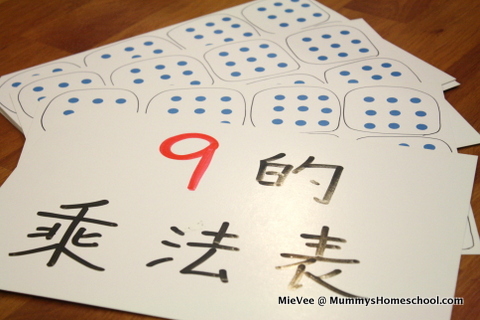
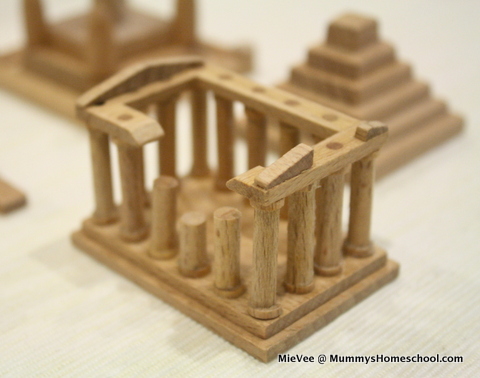
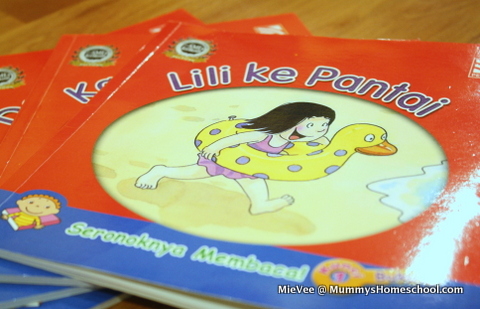
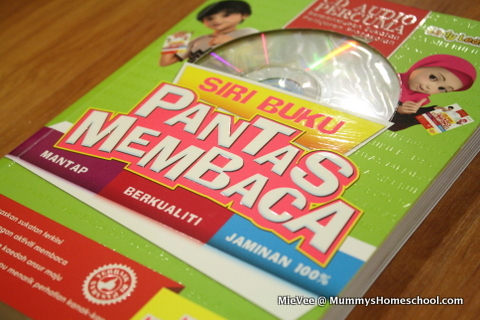
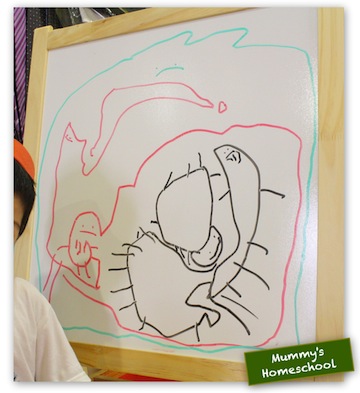
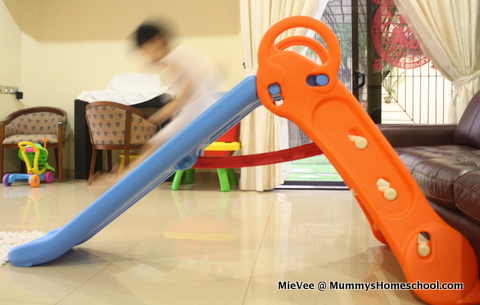
Thanks for the link, Mievie!
I love reading about Vee’s progress. Keeps me motivated 🙂
Ten objects on photographic memory! Whenever Tiger gets 5 correct, I feel like doing backflips already.
Do share with us your montessori area set-up.
Tiger is much younger, he’s actually in an advantageous position! Even though Vee’s showing some output now, I think he memorised things much more easily at 2+ years old, before the left brain started to kick in and slow things down. It’s really obvious.
I’m still moving things around in the schoolroom. Ok, will update when more settled.
Happy holidays in advance! 🙂
hi mv, its me again 🙂
ive attended a practical montessori course in KL earlier this month, and it helps to clear my head about Math presentations and language and cultural.
in montessori, i think they move from concrete to abstract, in Math particularly.
mv, could u share how do u conduct the Silence Game? or was it posted before?
also, the children’s father speaks cantonese to them at home? and u speak english and mandarin?
i salute you, u are teaching english, chinese and bahasa all together! =)
Hihi Shia! Yes, Montessori moves from concrete to abstract. It’s important to note that early right brain education wasn’t discovered during then. Mdm. Montessori’s first classes started from 2.5 years old. Her philosophy is to keep doing our own experiments and observations with the children, to see what works best. Therefore, in my opinion, the Montessori method has to be always progressive, keeping up with new research.
With the discovery of the effectiveness of early right brain education, I’m blending it with Montessori’s more traditional methods, hoping to achieve even better outcomes.
Regarding my blended method of learning multiplication: memorising first via audio method is very easy for 0-3 years old. Though they have no idea what the songs are about (abstract), it’s still a breeze to memorise, and interestingly, they often enjoy it. Just like how they learn a language and new songs.
At the same time, I supplement with flashcards showing the corresponding relationship of the dots, this is concrete. (i.e. the child sees how 2 x 9 looks like). Flashing cards at high speed helps to enhance memory.
Then also supplement with Montessori-type of hands-on materials, such as beads. For looking at and touching the real quantity.
Then (following Shichida Method) move on to flashcards that incorporate numerical equations. i.e. instead of 2 groups of 9 dots, show the written form 2 x 9 = 18 (abstract).
Also supplement with Montessori-type materials involving wriiten forms. E.g multiplication board.
Silence Game is under Karen’s Practical Life album. Also available in the free Montessori Method book and if you google around. The original method is more suitable for a classroom of children. With only 1 student now, I modified it.
Actually, both hubby and I speak Mandarin and English at home. Grandmother speaks Cantonese to hubby, but not to the kids, though we encourage her to. Hubby now starts to speak more Cantonese during bedtime routine. I’m also trying to speak some Hokkien at home, since the kids are Hokkien.
Haha… I’m not really teaching that much, just more of reading and conversation. Early exposure to languages certainly makes future learning easy. My parents didn’t teach me before Kindergarten, yet growing up in a multi-linguistic (2 languages + 3 Mandarin dialects) environment helped a lot. (This is also covered in the Montessori Method book.)
Have fun! 🙂
Hi there, u r really great at updating your blog. I enjoy learning from you and m guilty that i’m not doing as much for my bb girl who has just turned 1. clueless abt a lot of things n the world of “education” seems to be overwhelmed! duno where to start. Karen Tyler sounds like a plan and i’m thinking it might be useful for me to take up her course. May i know how many hours did u have to pump in n was there a lot of reading/ homework? The last thing i need is homework! i’ve enuff from my work and housework! n my baby is very clingy so it’s damn tough. but i need to strike a balance somehow. Please advise. thanks!
Hi Janice, thank you for reading my blog! So your bb and Jae (13+ months) are very close in age. 🙂
Karen Tyler course: no homework to be submitted. Reading is manageable, simply go through the relevant subject albums as they’re covered. If child is not at the relevant age yet, I simply skim through the content. Then read in more details when we reach the stage.
Most of my time related to the Montessori course is on creating homemade materials. Ready made Montessori materials are expensive, so I buy some and make some. Of course, you don’t need to cover every subject in detail.
Moreover, your bb is still young, so if you start making materials bit by bit now, they’ll come in useful when she’s about 1.5 to 2 years old. (Unlike me, rushing for 3+ years old Vee.)
Hope this helps! 🙂
thanks for the encouragement! i think i will need to get started with the course / materials soon! terribly guilty that i’m not doing anything for the baby. granted that I work full time, i do have the mornings with her, but it’s typically 2hours or so coz she’ll take her nap…so i really should do more! time isn’t enough!! hope i hv time to read and make those materials! haha Keep up the good work with the blog! HAPPY NEW YEAR!
May I add that when time is limited and for a young child (0-3 years old), right brain education (e.g. Shichida Method) is a very efficient way of learning. Relaxation techniques, imaging, playing audio files, memory games, recitation, speed reading, etc. set a great foundation for learning anything of interest in future. Playing audio files is the easiest. Simply play in the background while the child plays. After some weeks or months, sing / recite together. It’s amazing how much can be learnt through this easy method, and it boosts the memory power to ease future learning.
So for now, right brain education is our priority. For Montessori, I focus more on Practical Life and Sensorial.